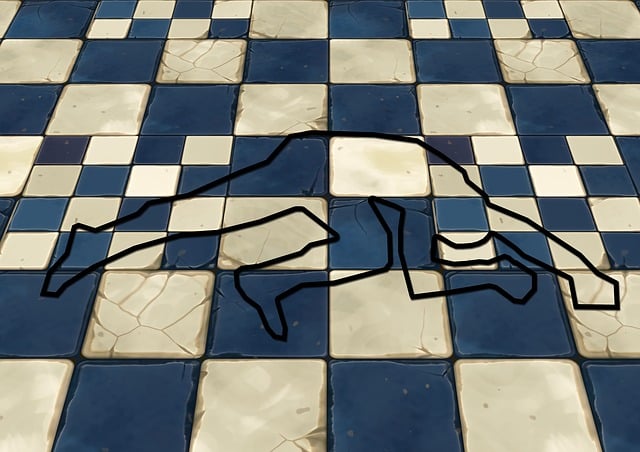In today's digital era, Scan-to-BIM (Building Information Modeling) is transforming renovation and restoration by creating accurate 3D models from advanced scanning technologies. Integrated with BIM software, this method offers a comprehensive view of structures, enhancing accuracy and streamlining documentation compared to traditional methods. BIM coordination services facilitate collaboration among architects, engineers, contractors, and historians, ensuring everyone works from the same accurate information for informed decisions. This approach minimizes errors, streamlines workflows, enhances project visibility, and facilitates respectful renovations, especially in historic building conservation. Implementing Scan-to-BIM requires strategic planning with high-quality scan data and clear objectives, leveraging BIM coordination services to optimize efficiency throughout the project lifecycle.
“Revolutionize renovation and restoration projects with Scan-to-BIM: a cutting-edge approach to preservation. This technology enables precise digital representations of existing structures, streamlining BIM coordination services and enhancing project accuracy. By seamlessly integrating scan data into Building Information Models (BIMs), Scan-to-BIM offers unparalleled efficiency, reduces errors, and improves collaboration among stakeholders. Discover how this modern method is transforming the industry, from understanding its fundamentals to exploring its diverse applications and best practices for successful implementation.”
Understanding Scan-to-BIM: A Modern Approach to Preservation
In today’s digital age, Scan-to-BIM (Building Information Modeling) has emerged as a game-changer in the field of renovation and restoration projects. This modern approach to preservation involves utilizing advanced scanning technologies to create precise 3D models of existing structures, which are then seamlessly integrated into BIM software. By combining high-resolution scans with comprehensive building information, Scan-to-BIM offers a holistic view of a structure’s history, current state, and future potential.
Unlike traditional methods that rely heavily on manual measurements and drawings, Scan-to-BIM streamlines the process of documenting and understanding complex architectural details. This not only enhances accuracy but also enables better collaboration among various stakeholders involved in renovation or restoration efforts, including architects, engineers, contractors, and historians. BIM coordination services play a pivotal role here by facilitating the seamless exchange of data, ensuring that everyone works from the same set of accurate, up-to-date information, leading to more informed decisions and ultimately, successful preservation projects.
The Role of BIM Coordination Services in Renovational Projects
In renovation and restoration projects, BIM coordination services play a pivotal role in ensuring seamless integration and accurate execution. By employing Building Information Modeling (BIM) technology, these services facilitate efficient communication and collaboration among various project stakeholders, including architects, engineers, contractors, and property owners. This holistic approach enables all parties to work from a single, unified digital model, minimizing errors, streamlining workflows, and enhancing overall project visibility.
Moreover, BIM coordination services help in identifying potential conflicts or clashes between different building systems—structural, mechanical, electrical, and plumbing—at an early stage. This proactive clash detection allows for informed decision-making and necessary design adjustments before construction begins. As a result, projects are completed more efficiently, on time, and within budget, while maintaining the highest standards of quality and safety.
Advantages and Applications: Revolutionizing Restoration Efforts
Scan-to-BIM technology is transforming renovation and restoration projects by offering unprecedented accuracy and efficiency. By utilizing 3D scanning and Building Information Modeling (BIM) coordination services, professionals can create detailed digital replicas of existing structures, providing a comprehensive understanding of the building’s architecture, construction details, and materials. This innovative approach revolutionizes restoration efforts in several ways.
First, BIM coordination ensures better project management and collaboration among various stakeholders, including architects, engineers, contractors, and preservationists. The digital model enables everyone involved to work with precise, up-to-date information, minimizing errors and miscommunications. Second, Scan-to-BIM facilitates more accurate and respectful renovations and restorations, allowing for the documentation of historical details and the preservation of architectural integrity. This technology is particularly valuable in historic building conservation, where every element may have significance, ensuring that interventions are informed and conservative.
Best Practices for Effective Scan-to-BIM Implementation
Implementing Scan-to-BIM effectively requires a strategic approach and adherence to best practices. Firstly, securing high-quality scan data is paramount; utilizing advanced scanning technologies ensures precise and detailed 3D models. Accurate data collection minimizes errors, facilitating seamless BIM coordination services throughout the project lifecycle.
Additionally, establishing clear objectives and scope is essential. Defining project goals and identifying which aspects will benefit most from Scan-to-BIM can optimize its application. Collaboration among stakeholders, including architects, engineers, and contractors, is key to successful integration. BIM coordination services should be employed to facilitate real-time data sharing and conflict detection, enhancing overall project accuracy and efficiency.
Scan-to-BIM technology is transforming renovation and restoration projects by offering unprecedented accuracy and efficiency. By leveraging 3D scanning and Building Information Modeling (BIM), professionals can achieve seamless BIM coordination services, enhancing project management and quality control. This modern approach ensures that every aspect of a building’s history and current state is meticulously documented, facilitating informed decisions and fostering successful preservation efforts. Embracing Scan-to-BIM is not just a trend but a game-changer for the industry, ensuring lasting and respectful transformations of our built environment.
